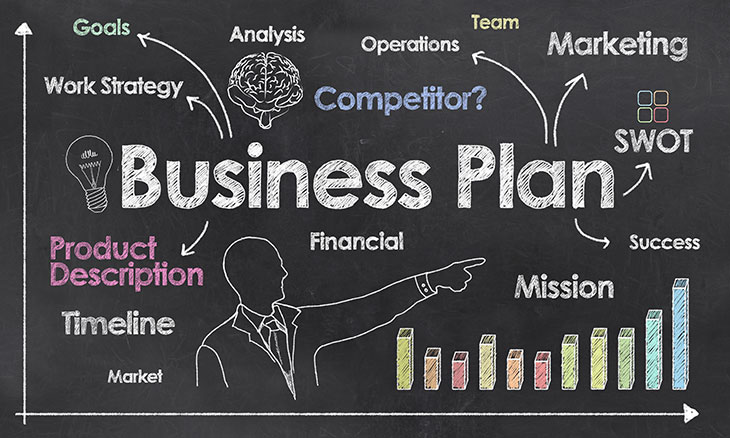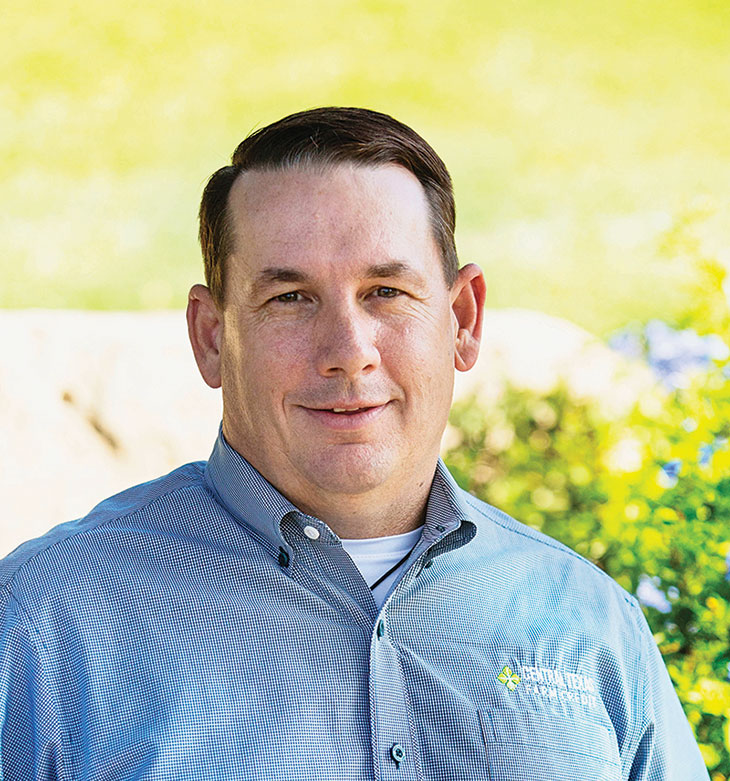
TLFurrer/Getty Images
Pick a business. Any business. From Wall Street to Main Street, or from high-tech to feed lot. It began with an idea. But it took work to bring concept to reality.
So what’s the first step?
Two Farm Credit veterans shared their perspectives on helping people launch their business — by starting with a plan.
“If you don’t know where you’re going, you’ll end up someplace else.” – Yogi Berra
Writing down your ideas and getting started may be the hardest part. Planning takes thought.

Colton Long, AgTexas Farm Credit Services
“We don’t see plans as often as we used to,” says Wade Polk, vice president and San Angelo branch manager for Central Texas Farm Credit. “Most folks keep their plan in their head. That’s not a good place for it to be.”
But it’s critical for the lender to understand your proposal.
“As a lender, we can’t start framing a financial package for a borrower without knowing where they want to go,” says Colton Long, vice president for commercial lending at AgTexas Farm Credit Services in Amarillo.
So just begin. You can refine your plan later.
“A good plan today is better than a perfect plan tomorrow.” – George S. Patton
"As a lender, we can’t start framing a financial package for a borrower without knowing where they want to go."
– Colton Long
What are lenders looking for? There are a few key ingredients to every business plan — vision, goals, production plan and financials. Simply write down your ideas and outline things as succinctly as possible.
“I most commonly see production plans and marketing plans,” says Polk. “But there’s usually gaps on the financial side.”
If you’re not sure how to build a business plan, there are many examples online.
You can also speak to your lender.

Photo by Casey Hatcher
Wade Polk, Central Texas Farm Credit
“I encourage producers to involve their lender when they’re formulating their business plan,” says Long. “Lenders will view things from a different angle. We can ask questions and provide insight that may help avoid a financial problem later.”
Polk agrees. “Plans give credence to what the borrower is requesting,” he says. “And a well-thought-out business plan gets the lender-borrower relationship into a better spot much quicker.”
But business plans are not static, “set-it-and-forget-it” deals. They evolve.
“Everybody has a plan until they get punched in the mouth.” – Mike Tyson
"I recommend reviewing your business plan at least once per year and anytime there’s a change in the operation."
– Wade Polk
Markets are volatile. Supply chains get interrupted. Weather may not cooperate. And the economics of supply and demand aren’t always predictable. Just look at the year 2020.
“Revisiting your business plan and financial forecast needs to be an ongoing process,” says Long. “You need to plan for contingencies.”
Polk concurs.
“I recommend reviewing your business plan at least once per year and anytime there’s a change in the operation,” says Polk. “For example, if you change your product from cotton to wheat, or wheat to stocker cattle, that’ll change your goals and objectives. So you need to relook at your plan.”
Few anticipated how COVID-19 would impact agriculture. But those who planned for contingencies in their operation were able to react faster.
“It takes as much energy to wish as it does to plan.” – Eleanor Roosevelt
Lots of people have ideas. Everyone dreams. But in the end, it takes more than hope to get a new business off the ground.
Lenders like Farm Credit want to help.
“When we enter into a lending relationship, we are partnering with people,” says Polk. “We have to be confident in their production and management skills. A business plan gets a lot of this out of the way.”
Long agrees, adding, “the more transparent a partnership is, the more likely it is to succeed.”
After all, in the words of Thomas Edison, “Good fortune is what happens when opportunity meets with planning.”
– Staff
Components of a business plan
- Business description – What are you going to do? What’s your product?
- Mission and/or vision – What’s your business’ purpose? Why does it exist?
- Goals – What results are you trying to achieve? Develop SMART goals — Specific, Measurable, Attainable, Relevant and Time-bound.
- Objectives – How are you going to achieve your goals?
- Production plan – What are the details of your operation? What are your money makers?
- Financial plan – How are your finances? Prepare a balance sheet, income statement and statement of cash flow.
- Marketing plan – What’s your marketing mix? Think through the four P’s — product, price, placement and promotion.